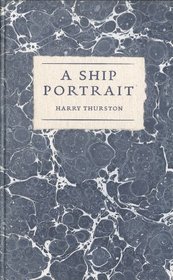Search -
Ship Portrait
Ship Portrait
Author:
A Ship Portrait is a tribute to the life and art of John O?Brien, nineteenth-century painter of ships, written as what Harry Thurston calls ?a novella in verse.? Built upon two voices, O?Brien?s and the poet?s, the poem traces the painter?s life in Halifax during the apex and decline of the Golden Age of Sail. Thurston characterizes this ... more »
Author:
A Ship Portrait is a tribute to the life and art of John O?Brien, nineteenth-century painter of ships, written as what Harry Thurston calls ?a novella in verse.? Built upon two voices, O?Brien?s and the poet?s, the poem traces the painter?s life in Halifax during the apex and decline of the Golden Age of Sail. Thurston characterizes this ... more »
ISBN-13: 9781554470075
ISBN-10: 1554470072
Edition: Limited
Rating: ?
ISBN-10: 1554470072
Edition: Limited
Rating: ?
0 stars, based on 0 rating




